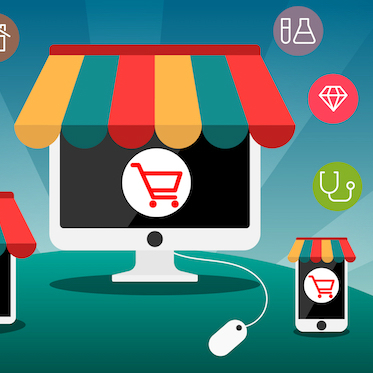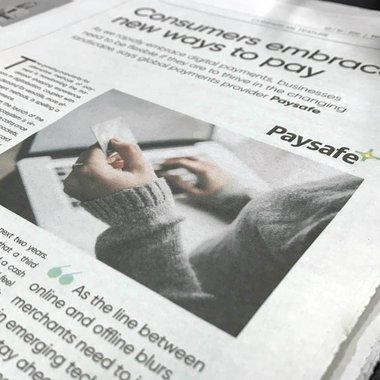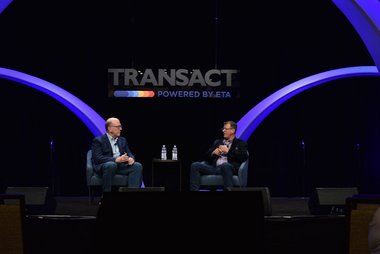
- 4 minutes read
The new payment ecosystem driving digital marketplaces
The explosion of digital marketplaces across so many consumer and business sectors—and now across dozens of countries—represents a growing economic opportunity.
The explosion of digital marketplaces across so many consumer and business sectors—and now across dozens of countries—represents a growing economic opportunity: In the US alone, by 2020, total B2B ecommerce sales are predicted to hit $1.1 trillion and will account for more than 12% of total B2B sales. Just as Netflix, Spotify, Birchbox and Dollar Shave Club helped validate the concept of subscription marketplaces in the consumer world, an emergent class of B2B marketplaces are proving to be the next growth catalysts. That group includes both software and marketplace platforms such as Uber, Airbnb, Etsy, QuickBooks, Mindbody, ServiceNow, and others.
With big growth, however, come big challenges for the companies that operate these marketplaces. Chief among those is the orchestration of payments—and the ability to offer instant, seamless, and secure transactions no matter what currency, country, method of payment, physical location, or time of day. A rapidly expanding array of new payment platforms and methods are helping these marketplaces to scale—and, in turn, pushing us ever closer to the notion of a truly cashless economy.
These new marketplaces don’t just allow for the intersection of sellers and buyers, they also offer crowd-based applications that connect consumers to independent service providers. Add to that the complexities of B2B ecommerce itself—merchant onboarding, multi-currency processing, settlement and payout, and risk management—and it’s easy to understand why it’s taken a while for these models to emerge.
A key enabler of the expansion of new payment technologies aligned with global commerce trends. As Jean-François Noël, CEO of FANS Entertainment explains, “new payment technologies are now leveling the playing field. Even smaller businesses can rely on first-rate capabilities in payment, authentication and security. It’s a springboard they can use to compete with the big guys.” This new payment ecosystem is beginning to emerge globally—driven by rapidly changing customer expectations for services, advancing trends in fintech, regulatory changes, and a continual increase in payment-enabling technologies.
How can marketplace leaders align payment methods and solutions with changing expectations and technologies? Here’s a look at some key elements of the new payment ecosystem that smart marketplaces are coming to embrace.
IoT-enabled purchasing
The rapid advance of IoT and the emergence of blockchain technology will have big implications for how marketplace platforms approach payments in the years to come. By 2021, more than 15 billion machine-to-machine (M2M) and consumer electronic devices will be connected online. Marketplaces will need to adapt to an array of new mobile wallets and P2P payment schemes emerging through blockchain and cryptocurrencies. Another factor pushing this forward is demographics: over 85% of 18-34 year olds plan to use mobile wallets over the next two years.
Wearable payments
While nearly four in five people carry less cash than they did a year ago, research shows that consumers still aren’t wholly comfortable with contactless payments – they’d rather pay with their mobile. That’s one reason why mobile payments are expected to grow via wearables and smart phones, branded mobile wallets from retailers, and mobile wallets from credit card issuers or banks. Further off, advances in biometrics are also expected to drive adoption and continued growth in wearable payments.
Growth in electronic and mobile payments
Electronic and mobile payments will see double-digit growth for the foreseeable future— growing annually by 10.5% through 2020. By 2019, roughly about half of transactions carried out using a credit or debit card will be made either online or through a mobile phone. Electronic and mobile payments accounted for about 31% of total card transactions volume in 2015—by 2019, that share will bump up to 45%.
Nex-gen instant payments
Earlier this year, The Clearing House launched industrial testing of real-time payments earlier this year. The system will support sending and receiving of credit transfers, remittances, and non-transactional advices in real-time. Similar platforms are emerging in Europe, Japan, and Australia.
As marketplaces grow in variety and scale, they will often serve as the primary brand that customers interact with—not individual merchants. As such, they must bear all the responsibility of successful and secure transactions. The rapid adoption of so many new payment methods provides marketplaces powerful new tools to meet demand, but the audiences they serve are fairly unforgiving: customers today expect flawless execution when parting with their money. Thus, brands committed to mastering these new payment offerings will be best placed to capture the growth that is sure to follow.




